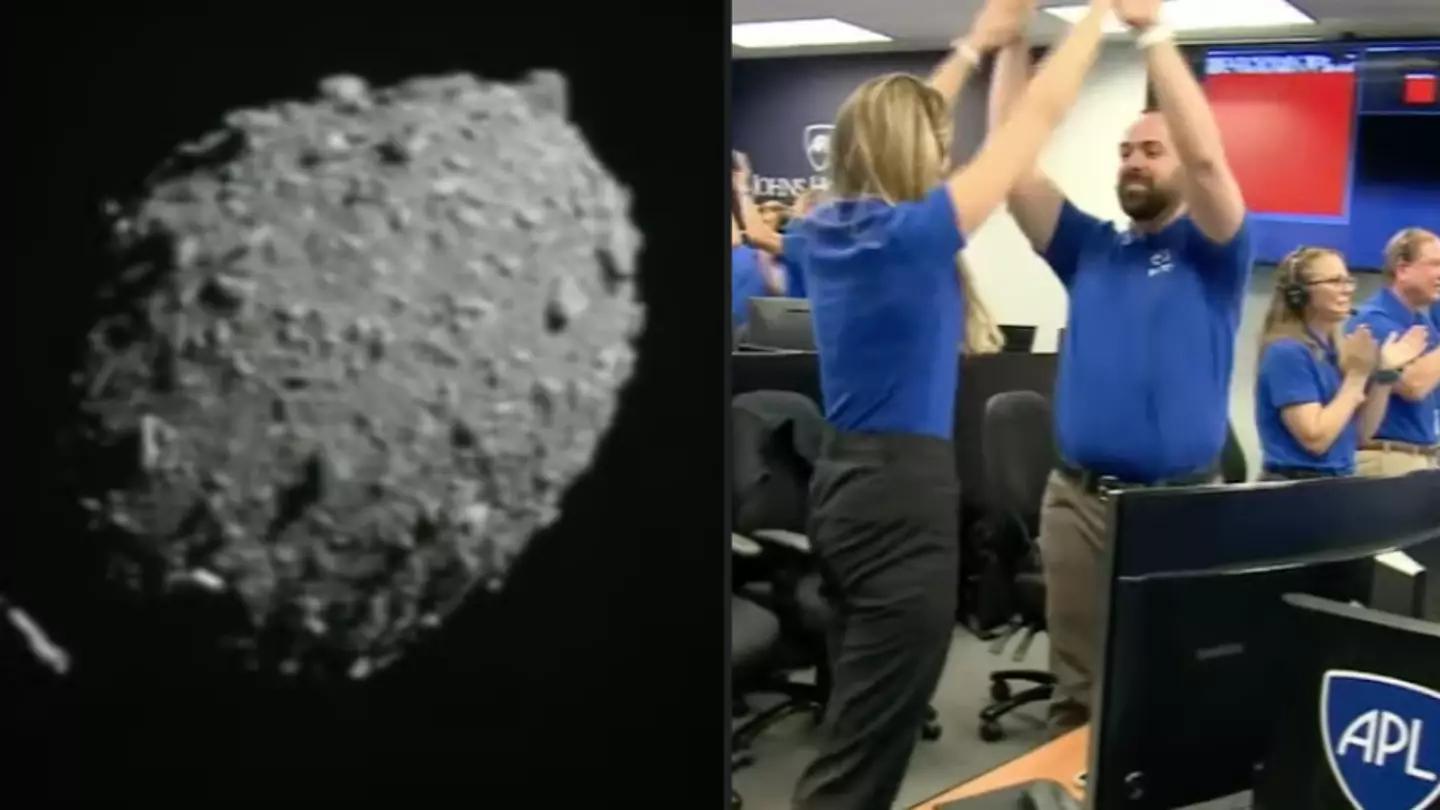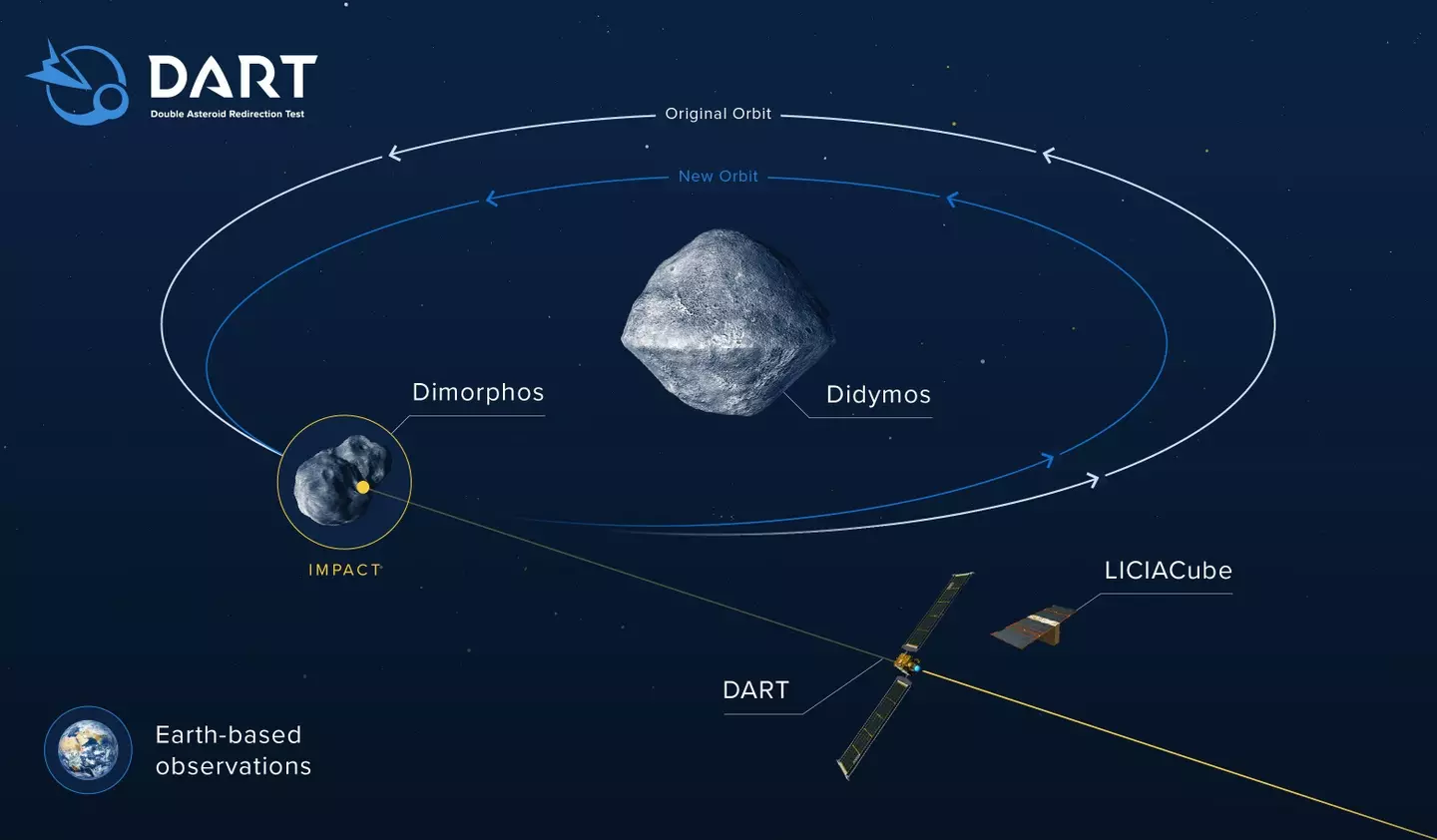
NASA has successfully ploughed a hugely expensive rocket into the side of an asteroid at a remarkable speed, completing a mission that isn’t all that dissimilar to the plot of the movie Armageddon.
Whereas that film starred Bruce Willis, Liv Tyler, Ben Affleck, and Billy Bob Thornton – amongst others – this particular rocket wasn’t set to carry any astronauts, just to crash headlong into an asteroid to prove that they could.
The asteroid in question was named Dimorphos and was just floating through the cosmos minding its own business.
Advert
Then, NASA decided to fire a rocket – aptly called the Double Asteroid Redirection Test (DART) – at it simply to prove that they could.
Of course, we’ll all be happy with this sort of research and development if an asteroid that is a threat to us ever shows up, so perhaps we shouldn’t be so cynical.

Dimorphus is part of an asteroid system that orbits another asteroid called Didymos, with each orbit taking about 11 hours and 55 minutes.
The plan here – which will see the rocket smashed to tiny wee pieces – is to shorten that orbit by 10 minutes.
Advert
That proves that it is possible to deflect such potentially troublesome celestial invaders by firing a big old rocket at them.
Before the launch, NASA said: “Dart’s target asteroid is not a threat to Earth but is the perfect testing ground to see if this method of asteroid deflection – known as the kinetic impactor technique – would be a viable way to protect our planet if an asteroid on a collision course with Earth were discovered in the future.”
At the time of the collision, it was thought that DART might have been travelling at around 15,000 miles per hour, which – obviously – is a frankly ridiculous speed.
The whole event is taking place around 11 million kilometres from Earth, so you can get a grip of the numbers we are talking about when we mention ‘near earth’ objects.
Still a long way away, but there’s loads of them.
Advert
About 27,000, if you want to know.

DART set off about 10 months ago, accompanied by a small satellite that detached in order to record the collision.
Then, the European Space Agency (ESA) will launch another spacecraft called Hera in 2024.
Hera will head on out to the site of the asteroids in order to hopefully get hold of some information about the crash.
Advert
The ESA said: “By the time Hera reaches Didymos, in 2026, Dimorphos will have achieved historic significance: the first object in the Solar System to have its orbit shifted by human effort in a measurable way.”
Sure, we might have problems down on Earth now that seem more pressing, but we don’t want to get side-swiped by a giant space rock whilst we’re all concentrating on the pound tanking and the world’s oceans boiling, right?
Topics: World News, Space, SpaceX, Science, Technology